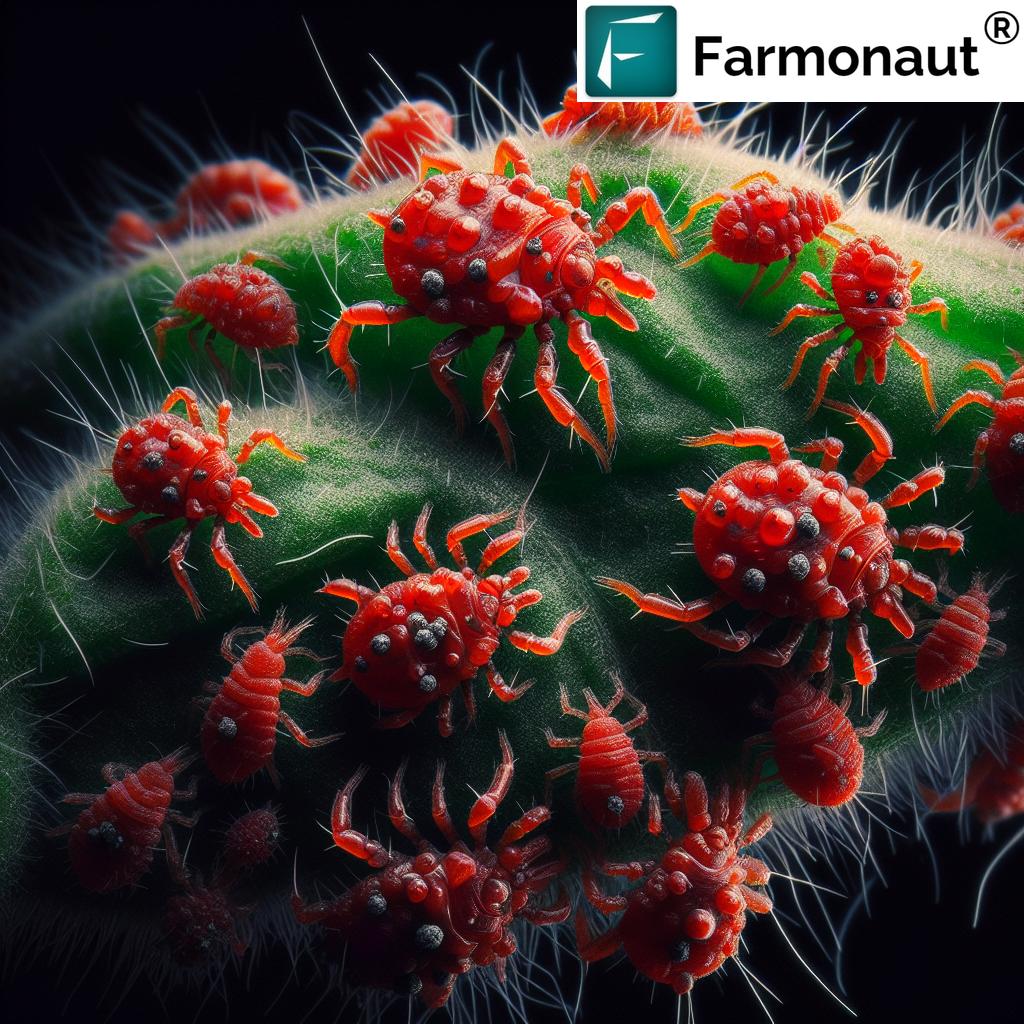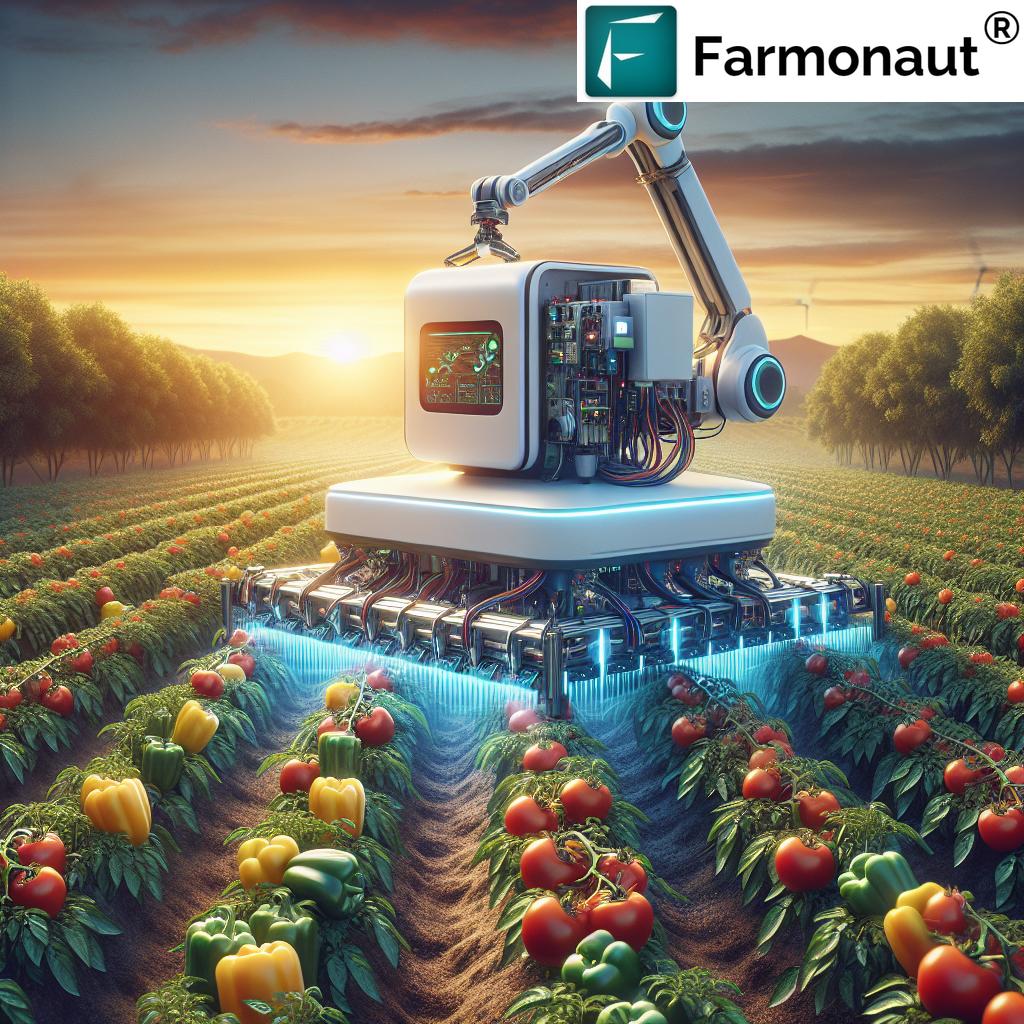NPK 10 10 10 Fertilizer: Unlock Powerful Crop Growth in 2026
“NPK 10-10-10 fertilizer provides equal 10% nitrogen, phosphorus, and potassium, essential for balanced crop nutrition in 2026.”
Table of Contents
- Introduction: Why NPK 10-10-10 Fertilizer is Crucial in 2026
- Understanding NPK Fertilizers: The Role of Nitrogen, Phosphorus, and Potassium
- Major NPK Formulations: 10-10-10, 20-10-10, 10-20-10 and Their Strategic Use
- Liquid vs Granular NPK 10-10-10: Forms, Efficiency, and Application
- Precision Agriculture in 2025 & Beyond: Revolutionizing NPK Application
- Farmonaut’s Satellite-Based Tools for Smart Fertility Management
- Best Practices: NPK 10-10-10 Application Strategies for Healthy Crops
- Environmental & Economic Impact of Modern NPK Fertilizer Use
- Comparative Table: Liquid vs Granular NPK 10-10-10 for Precision Ag
- NPK Fertilizer Sourcing in 2026: Lowes & Customized Blends
- NPK’s Influence: Forestry, Mining, and Infrastructure Reclamation
- Conclusion: NPK Fertilizers & Future-Ready Farming
- FAQ on NPK 10-10-10 and Precision Fertilizer Use in 2026
Introduction: Why NPK 10-10-10 Fertilizer is Crucial in 2026
In modern agriculture, the choice and application of fertilizers significantly impact not only crop yield and soil health but also the economics and sustainability of the entire farm. Among the myriad nutrient combinations, NPK 10-10-10 fertilizer stands out in 2026 for its balanced ratio of nitrogen (N), phosphorus (P), and potassium (K). This balance, essential for healthy crop development and sustainable practices, is becoming increasingly vital as precision agriculture takes center stage.
Our comprehensive guide explores NPK 10-10-10 fertilizer and its alternatives, compares liquid versus granular forms, and shows how this balanced formulation supports optimal plant growth and soil health. We also dive deep into precision agriculture strategies for 2025–2026, including the latest technology innovations, sourcing options (like 10-10-10 fertilizer Lowes), environmental management, and best practices to unlock your farm’s potential.
“In 2025, over 65% of farms are projected to adopt liquid or granular NPK fertilizers with precision agriculture tools.”
Understanding NPK Fertilizers: The Role of Nitrogen, Phosphorus, and Potassium
NPK is at the heart of fertility management and crop nutrition. These three primary nutrients—nitrogen (N), phosphorus (P), and potassium (K)—feed plants at every stage of their life cycle. But to optimize performance, it’s vital to understand their specific effects on plant growth:
- Nitrogen (N): Drives vigorous, leafy growth, increases chlorophyll production, and is vital for protein synthesis in all crops. Its deficiency quickly leads to reduced yields and pale leaves.
- Phosphorus (P): Essential for developing strong roots, robust stems, and supporting early plant development. Phosphorus is also crucial for flowering and fruit/seed formation.
- Potassium (K): Regulates water balance, enhances disease resistance, and is involved in the synthesis of sugars and starches—boosting both crop quality and overall productivity.
NPK 10-10-10 fertilizer contains an equal percentage balance of N, P, and K—each constituting 10% of the total weight. For every 100kg of fertilizer, 10kg is nitrogen, 10kg phosphorus (as P₂O₅), and 10kg potassium (as K₂O), with the remainder being inert filler or carrier agents. This balanced formulation is often recommended for general use, making it an excellent first choice for a wide range of crops and soil conditions in 2026.
Why Balance Matters: Understanding Ratios and Plant Needs
The ratios in NPK fertilizers directly impact crop performance, soil chemistry, and yield. Here’s how they cater to different needs:
- Balanced formulation (10-10-10): Suits mixed-crop fields, gardens, orchards, and high-value horticulture. It supports overall plant vigor, healthy root development, and enhances the resistance to diseases.
- Nitrogen-rich (20-10-10): Emphasizes leafy growth, making it ideal for early vegetative phases in maize, wheat, and grass pastures.
- Phosphorus-enriched (10-20-10): Supports strong root establishment, flowering, and is advantageous for tuber crops and plants requiring a robust early foundation.
Ensuring the right balance is pivotal for sustainable farming practices and maximizing yield while maintaining soil health.
Major NPK Formulations: 10-10-10, 20-10-10, 10-20-10 and Their Strategic Use
Let’s examine three frequent NPK formulations, their specific nutrient concentrations, and which situations they’re best suited for:
1. NPK 10 10 10 Fertilizer: The Balanced Solution
- Contains: 10% N, 10% P₂O₅, 10% K₂O
- Usage: Versatile for general application. Works well for lawns, vegetables, gardens, and ornamentals.
- Benefits: Promotes overall growth, balanced nutrient uptake, and resilience against diseases and environmental stress.
2. NPK 20 10 10 (20-10-10 Fertilizer): High-Nitrogen Power
- Contains: 20% N, 10% P₂O₅, 10% K₂O
- Usage: Tailored for early crop stages, particularly maize, wheat, and leafy vegetable crops needing rapid green-up.
- Benefits: Promotes leaf biomass and accelerates early development.
3. NPK 10 20 10 (10-20-10 Fertilizer): Root and Flowering Focus
- Contains: 10% N, 20% P₂O₅, 10% K₂O
- Usage: Suits tuber crops like potatoes, beets, and flowering plants such as tomatoes and peppers.
- Benefits: Supports root expansion, flowering, and fruiting stages.
Pro Tip: Soil testing is essential for customizing fertilizer choice. Technologies such as the Large Scale Farm Management platform from Farmonaut support precision field monitoring, providing satellite-based data to help guide decisions on which NPK ratio your field needs.
Liquid vs Granular NPK 10-10-10: Forms, Efficiency, and Application
The shift toward precision agriculture and smart input use has spurred dramatic growth in both liquid and granular fertilizer adoption. Here’s what each form offers:
- Granular NPK 10-10-10:
- Traditional, solid-state application
- Provides slow to moderate-release of nutrients
- Suitable for broadcast, banding, or side-dressing techniques
- Favoured for row crops, field-scale grains, and root crops
- 10-10-10 Liquid Fertilizer:
- Rapid nutrient availability—delivers nutrients almost instantly
- Enables accurate application through drip irrigation, hydroponics, and foliar feeding
- Perfect for precision targeting and correcting deficiencies mid-season
- Used widely in controlled environments (e.g., greenhouses), and for high-value crops
Deciding between 10-10-10 liquid fertilizer and granular forms depends on crop requirements, soil conditions, resource availability, and operational scale. Often, a combination tailored for various growth stages maximizes results.
Precision Agriculture in 2025 & Beyond: Revolutionizing NPK Application
By 2025 and looking toward 2026, precision agriculture is transforming fertilizer use and boosting efficiency, thanks to advances in satellite imagery, sensors, and data analytics. Here’s how precision ag reshapes the management and application of NPK 10-10-10 fertilizer:
-
Soil Testing & Nutrient Mapping:
Precision testing reveals in-field variations in nutrient content and soil health. This paves the way for variable rate NPK application—applying more nutrients where needed and less where not—cutting costs and minimizing nutrient runoff. -
Satellite-Driven Insights:
Multispectral imaging uncovers crop deficiencies as they emerge. For example, if zones show nitrogen stress, a quick switch from NPK 10-10-10 fertilizer to NPK 20 10 10 precisely in affected areas ensures rapid correction without unnecessary input elsewhere. -
AI-Integrated Recommendations:
Modern AI advisory systems (such as Farmonaut’s Jeevn AI) analyze current weather, growth stage, and soil conditions, advising fertilizer blends like 10-20-10 or liquid formulations for specific fields at just the right time—even alerting farmers to environmental risks (e.g., potential runoff due to high rainfall). -
Automated Application & Smart Dispensers:
IoT-enabled spreaders adapt on-the-go, using application maps produced from satellite and drone imagery, to optimize NPK 10-10-10 fertilizer use for maximum yield and minimal waste.
With these advancements, farmers can improve crop health while safeguarding the environment and enhancing farm profitability.
Farmonaut’s Satellite-Based Tools for Smart Fertility Management
At Farmonaut, we believe cutting-edge technology should empower everyone in agriculture. Our satellite-driven platform delivers actionable insights for smarter NPK 10-10-10 application, resource savings, and sustainable farm management. Here’s what sets us apart:
- Real-time Monitoring: Farmonaut’s satellite-derived NDVI, soil moisture, and crop vigor maps help pinpoint nutrient deficiencies and optimize timing and application of NPK 10-10-10 fertilizer.
- AI-Based Advisory (Jeevn AI): Our AI system delivers tailored fertilizer recommendations, weather forecasts, and resource management tips for every field, all accessible via Android, iOS, or web apps.
- Resource Efficiency: With fleet management capabilities, you can monitor field equipment for fertilizer distribution, reducing operating costs and preventing over-application.
- Traceability & Carbon Footprint: Our blockchain technology ensures transparency from input to harvest, while carbon footprinting tools help your operation document and reduce environmental impact.
Explore our API for custom integrations: Farmonaut API (developer docs).
Whether you’re managing expansive wheat fields or vegetable greenhouses, Farmonaut’s cloud-based platform puts precision farming and satellite intelligence in the palm of your hand.
Best Practices: NPK 10-10-10 Application Strategies for Healthy Crops
Getting the most from NPK 10 10 10 fertilizer means applying it with precision and an understanding of soil, crop, and environmental trends. Here are top strategies for 2025–2026:
-
Test, Don’t Guess:
Regularly test your soil to determine existing nutrient levels and pH. Modern satellite monitoring platforms such as those from Farmonaut (large-scale farm management tools) overlay these results with field imagery for dynamic decision-making. -
Align Fertilizer Form to Growth Stage:
Early stages may benefit from a higher nitrogen ratio (20-10-10 fertilizer). During flowering or tuber formation, switch to phosphorus-forward blends (10-20-10 fertilizer). For general, balanced growth, npk 10 10 10 fertilizer is ideal. -
Time Matters:
Apply fertilizer just before a rain or irrigation event so nutrients dissolve and are absorbed by roots. Avoid application ahead of heavy downpours to reduce runoff risk. -
Choose right Application Technique:
- Banding and Side-dressing: Reduce surface exposure—nutrients are targeted near roots.
- Foliar Feeding (Liquid): Delivers 10-10-10 liquid fertilizer directly to leaves for fast correction of visible deficiencies, particularly for high-value, short-cycle crops or vegetables.
- Broadcast/Top-dressing (Granular): Ensures broad coverage but requires careful rate calculation to avoid waste.
-
Integrate with Organic Amendments:
Compost, manure, and cover crops enhance soil health, improving the retention and efficiency of applied NPK fertilizer. -
Monitor Residual Impact:
Keep an eye on potential buildup or depletion using satellite-based tools and adjust practices accordingly—rotation and alternate formulations ensure balanced nutrition and longevity of soil fertility.
Environmental & Economic Impact of Modern NPK Fertilizer Use
Balanced use of npk 10 10 10 fertilizer, supported by data-driven strategies, brings both environmental protection and increased profitability. Here’s how:
-
Reduced Runoff & Pollution:
Precision application via digital mapping and liquid fertilizer techniques prevents excess nutrients from washing into waterways, helping to stop problems like algae blooms and pollution in vulnerable areas (see Florida Fertilizer Ban 2025). -
Sustained Soil Health:
Continuous overuse—especially of nitrogen-rich blends like 20-10-10 fertilizer—can cause soil acidification and degrade structure. Alternating with balanced or phosphorus-forward blends, while supplementing with organic amendments, preserves long-term soil fertility. -
Economic Efficiency:
With variable rate technology, farmers save on inputs and energy costs. Satellite-based documentation (like that provided by Farmonaut) also supports crop loan & insurance applications by providing transparent field records. -
Boosting Yields Responsibly:
Thanks to advanced application strategies, balanced formulations, and real-time tracking, productivity rises without harming the environment—securing food production for the future.
To further enhance transparency and sustainability in your farming operations, consider leveraging Farmonaut’s Traceability solutions, enabling end-to-end input tracking and compliance with evolving regulatory demands.
Comparative Table: Liquid vs Granular NPK 10-10-10 for Precision Ag
| Fertilizer Form | Nutrient Release Rate (Estimated) | Application Ease | Nutrient Uptake Efficiency (%) | Cost per Acre (Estimated) | Soil Health Impact | Compatibility with Precision Tech |
|---|---|---|---|---|---|---|
| Liquid NPK 10-10-10 | Immediate to Fast (within hours–1 day) | Very high (drip, foliar, hydroponic, fertigation systems) | 70–80% | $40–$60 | Low residue, minimal buildup | Excellent (dosing systems, sensors, satellite) |
| Granular NPK 10-10-10 | Slow to Moderate (2 days–2 weeks) | High (broadcast, banding) | 60–75% | $30–$50 | Potential for salt buildup if overused | Good (works with most smart spreaders) |
NPK Fertilizer Sourcing in 2026: Lowes & Customized Blends
Access to the right NPK fertilizer formulation is easier than ever for farmers, whether purchasing standardized solutions from major retailers or sourcing fully customized blends.
-
10 10 10 fertilizer Lowes:
Outlets like Lowes offer NPK 10-10-10 fertilizer and related formulations nationally, ensuring availability for smaller growers and expanding home gardening. The reliability, easy instructions, and competitive pricing empower widespread adoption of balanced nutrition strategies. -
Specialized Agribusiness Blends:
Increasingly in 2026, large and tech-enabled farms turn to customized blends refined to local soil health data, region-specific crops, and environmental conditions for maximum efficiency and sustainability.
Producers seeking the best value should analyze nutrient requirements, source cost-effective products, and always validate claims with lab testing and digital mapping. Farmonaut’s platform can help monitor results and long-term field performance regardless of fertilizer brand or blend.
NPK’s Influence: Forestry, Mining, and Infrastructure Reclamation
While agriculture remains the primary user of NPK fertilizers, the impact of balanced nutrient management spreads into other crucial sectors:
- Forestry: Custom NPK blends and sustainable nutrient management promote tree health and accelerate land reclamation, especially where soils are degraded.
- Mining: Post-mining land restoration often involves the strategic application of NPK and organic amendments to reestablish fertility and encourage the regrowth of native plant species.
- Infrastructure Development: Reclaimed infrastructure sites, such as highway verges or former construction zones, benefit from NPK inputs to restore ecosystem balance and support sustainable development.
Monitoring systems, like those provided by Farmonaut, support organizations in crop plantation forest advisory and in tracking the environmental recovery of post-mining or infrastructure projects for compliance and reporting.
Conclusion: NPK Fertilizers & Future-Ready Farming
As we approach 2026, the centrality of NPK 10-10-10 fertilizer and other balanced nutrient formulations to modern agriculture cannot be overstated. Whether supporting food crops, specialty vegetables, or even post-industrial land restoration, NPK solutions—guided by high-resolution data, liquid or granular format options, and cutting-edge technology—are laying the foundation for both immediate productivity gains and long-term soil health.
With platforms such as Farmonaut, you can turn digital insights into field results, securing not only higher yields but also greater stewardship of environmental resources, full compliance with evolving standards, and the flexibility to customize fertilizer applications at scale or for specialty needs.
NPK’s future lies in precision, customization, and sustainability. By combining balanced formulations, smart technologies, and responsible management practices, we can unlock new growth possibilities—on your farm, in your region, and for the planet as a whole.
FAQ on NPK 10-10-10 and Precision Fertilizer Use in 2026
1. What does NPK 10-10-10 fertilizer mean?
NPK 10-10-10 fertilizer contains 10% nitrogen (N), 10% phosphorus (P₂O₅), and 10% potassium (K₂O) by weight, offering a balanced formulation of the three primary nutrients essential for healthy crop growth.
2. Is 10-10-10 fertilizer good for all plants?
10-10-10 is a balanced, general-purpose fertilizer ideal for lawns, vegetables, ornamentals, and mixed cropping systems. For crops with specialized needs (high nitrogen or phosphorus), specific formulations like 20-10-10 or 10-20-10 may be better suited.
3. What’s the difference between liquid and granular NPK fertilizers?
Granular forms release nutrients slowly over days or weeks, while liquid formulations deliver nutrients almost instantly, are easily absorbed, and enable precision techniques like fertigation or foliar feeding. See the comparative table above for full details.
4. How can precision ag technologies help with NPK application?
Precision technologies—like satellite imagery, soil sensors, and AI decision tools—allow farmers to monitor soils and crops in real time, apply NPK only where and when needed, reduce waste, and maximize both crop yield and environmental protection.
5. Does Farmonaut supply NPK fertilizer?
No, Farmonaut does not sell, manufacture, or distribute fertilizers. We offer satellite-based precision agriculture solutions, providing farmers and agribusinesses with the data and advisory tools required for efficient input management and sustainable farm operations.
6. Can NPK 10-10-10 be applied through irrigation?
Yes! 10-10-10 liquid fertilizer is especially well-suited for drip or sprinkler fertigation systems, enabling precise delivery and quick nutrient uptake.
7. Where can I buy NPK fertilizers like 10-10-10?
Standard formulations (including 10-10-10 fertilizer Lowes) are widely available at national retailers. For custom blends, consult local agribusiness suppliers or work with your technology partner for advisory inputs tailored to your soil and crop needs.
8. Will long-term NPK fertilizer use harm soil?
BALANCED and measured application is safe, especially when combined with organic matter. Overuse—particularly of high-nitrogen formulas like 20-10-10—may risk soil acidification. Integrate organic amendments and rotate blends for sustainable management.
Take your farm management into the future: Leverage Farmonaut’s platform for satellite-driven insights, AI-powered fertilizer recommendations, and end-to-end resource optimization!













